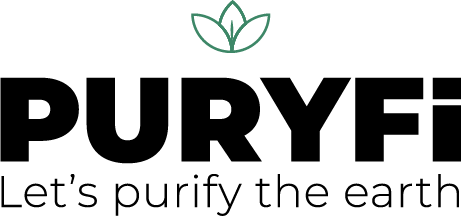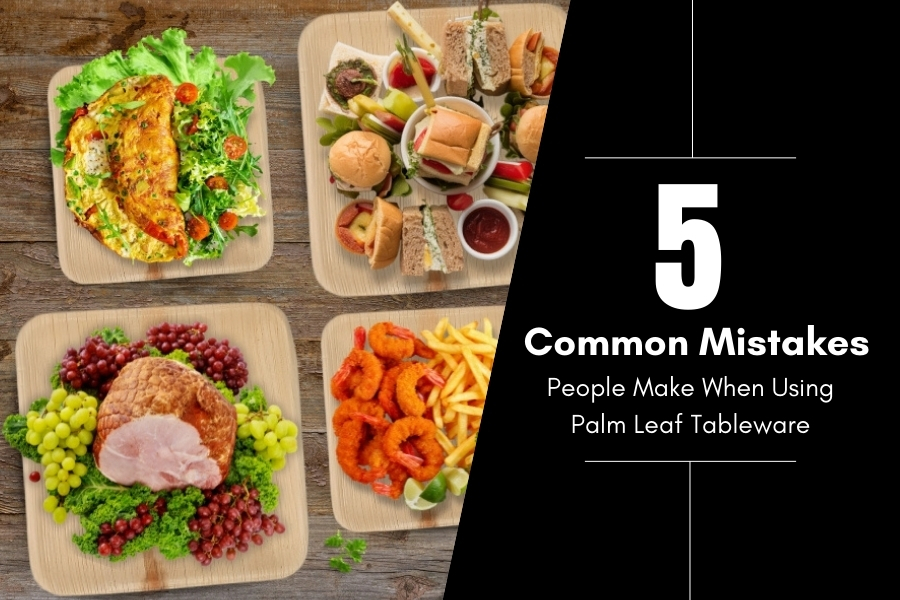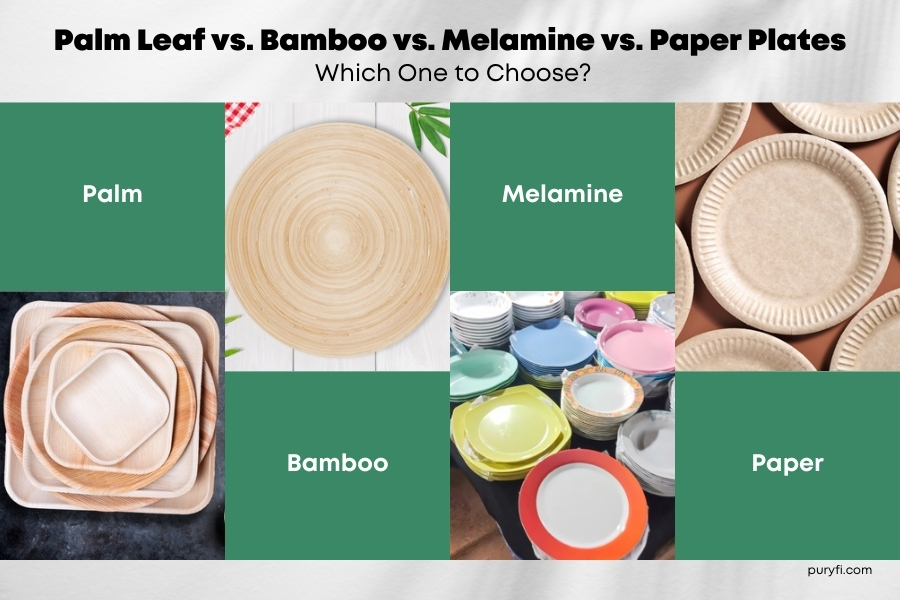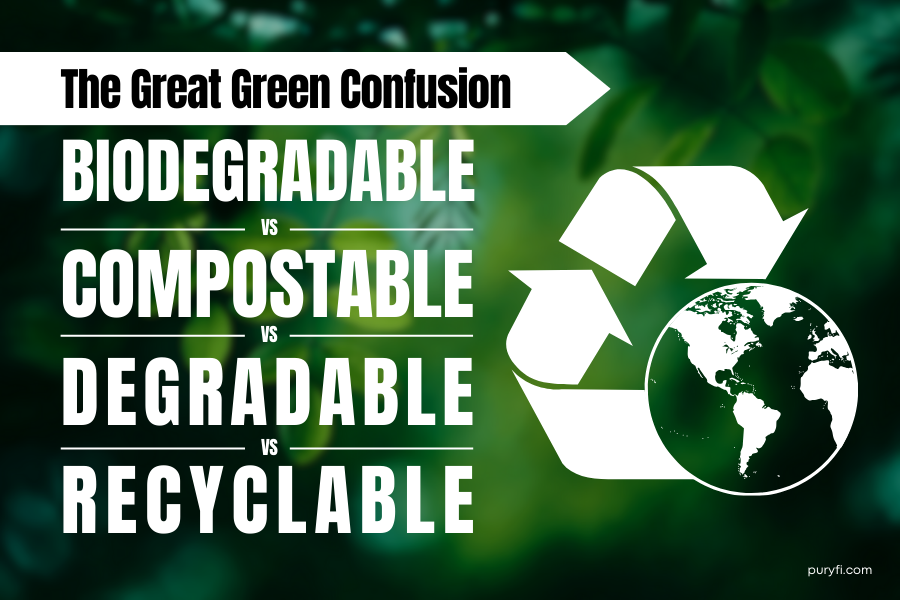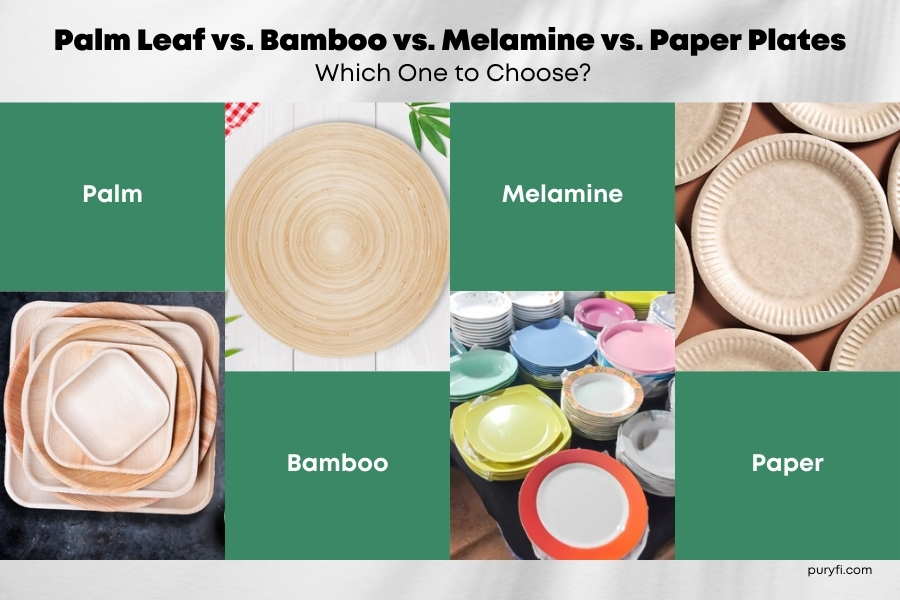
We all care about making eco-friendly choices, and selecting sustainable tableware is a great start. But are you picking the option that truly minimizes your environmental impact? Well, when it comes to choosing the right type of plates for your meals, parties, or events, the options can be overwhelming. Each material has advantages and drawbacks, from eco-friendly alternatives like palm leaf plates, bamboo plates, and paper plates to durable and reusable melamine plates. The best choice depends on various factors like sustainability, durability, cost, and convenience.
In this article, we will compare four popular options—palm leaf, bamboo, paper, and melamine—so you can choose the one that best fits your needs and lifestyle.
Palm Leaf Plates
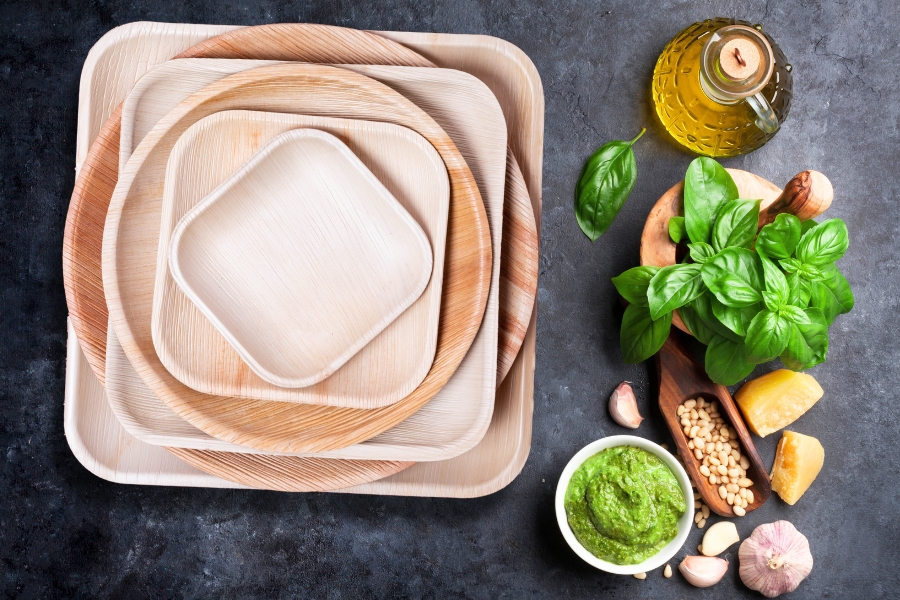
Palm leaf disposable plates are made from naturally shed leaves of the Areca palm tree, making them one of the most sustainable options. They are biodegradable, compostable, and free from chemicals or toxins.
Pros:
- Eco-Friendly: 100% natural and compostable.
- Renewable Source: Made from dropped palm leaves, these plates come from a renewable source without causing deforestation.
- Sturdy: Can handle hot, wet, and oily foods without leaking or breaking.
- Aesthetic Appeal: Their natural wood-like appearance makes them a stylish choice for special occasions and rustic-themed events.
- No Chemicals: Unlike plastic or paper plates that may have coatings, palm leaf plates are free from synthetic additives.
Cons:
- Cost: More expensive than paper or plastic alternatives.
- Limited Availability: Not as widely available as paper or plastic plates in all markets.
To know more about palm leaf plates and other tableware, read our blog: The Journey of Palm Leaf Tableware: From Forest to Your Table
Bamboo Plates
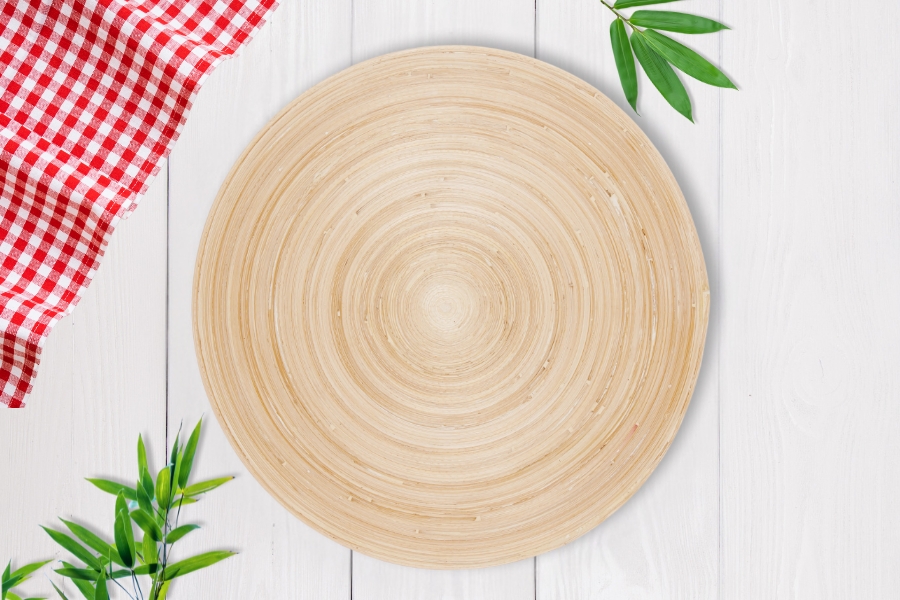
Bamboo plates are another eco-friendly alternative, obtained from bamboo fibers or solid bamboo. They can be reusable or compostable, depending on the type.
Pros:
- Sustainable: Bamboo grows quickly, making it an excellent renewable resource.
- Durable: Stronger than paper plates and resistant to soaking.
- Aesthetic: Similar to palm leaf plates, bamboo plates have a natural and elegant look.
Cons:
- More Expensive: Higher upfront cost compared to paper plates.
- Not Always Fully Biodegradable: Some bamboo plates contain binders or coatings that prevent full decomposition.
- Care Needed: Reusable bamboo tableware needs to be hand-washed and is not always dishwasher-safe.
Melamine Plates
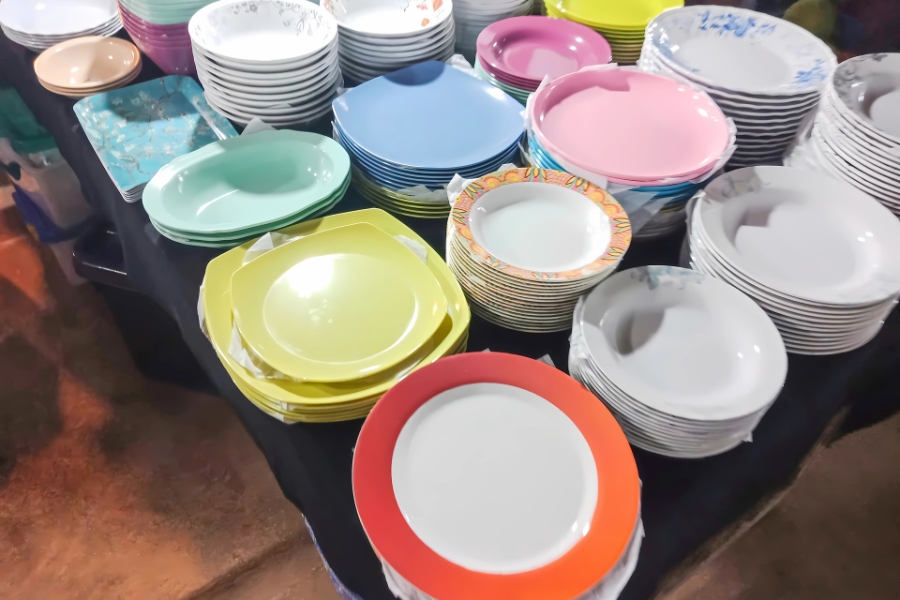
Melamine plates are a durable, reusable option often found in homes and restaurants. Made from a type of plastic resin, melamine plates are shatter-resistant and come in various designs.
Pros:
- Reusable: Long-lasting and can be washed and used for years.
- Durable: Resistant to breaking, making them great for kids and outdoor dining.
- Cost-Effective Over Time: Though more expensive initially, their reusability makes them a good investment.
- Lightweight: Easier to handle compared to ceramic or glass plates.
Cons:
- Not Microwave-Safe: Melamine can release harmful chemicals when exposed to high heat.
- Not Biodegradable: Since they are made of plastic resin, they do not break down naturally.
- Potential Health Risks: There have been concerns about chemicals leaching into food when used improperly.
Paper Plates
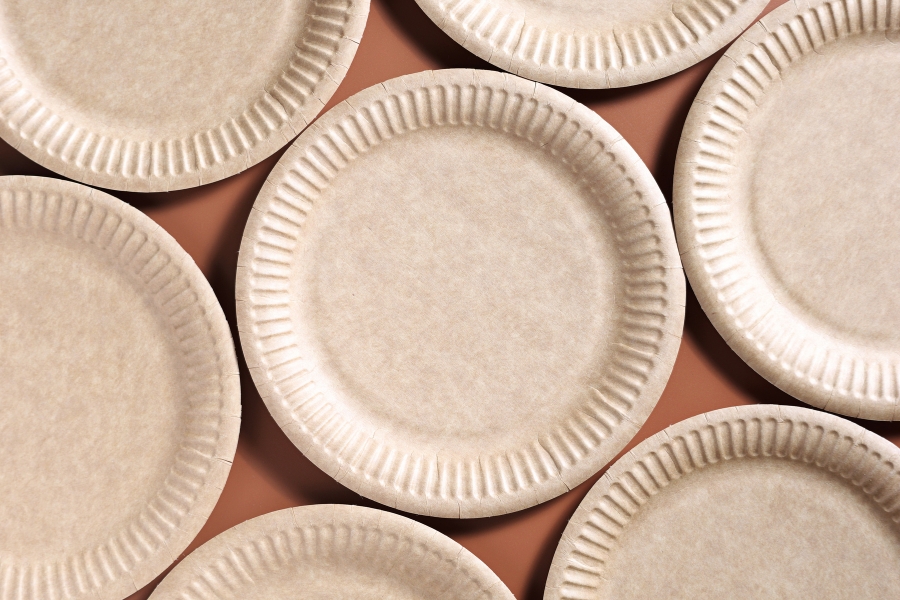
Paper plates are a popular choice for convenience and affordability. They are widely available and commonly used for picnics, parties, and casual meals.
Pros:
- Affordable: One of the cheapest disposable options.
- Convenient: Lightweight and easy to use.
- Variety: Comes in different sizes and designs for various occasions.
- Biodegradable (Some Types): Uncoated paper plates decompose quickly.
Cons:
- Not Sturdy: Can become soggy when used with wet or greasy foods.
- Coated Versions Are Not Eco-Friendly: Many paper plates have a plastic or wax coating that makes them non-compostable.
- Single-Use Waste: Even biodegradable options contribute to waste since they’re discarded after one use.
Comparison Table
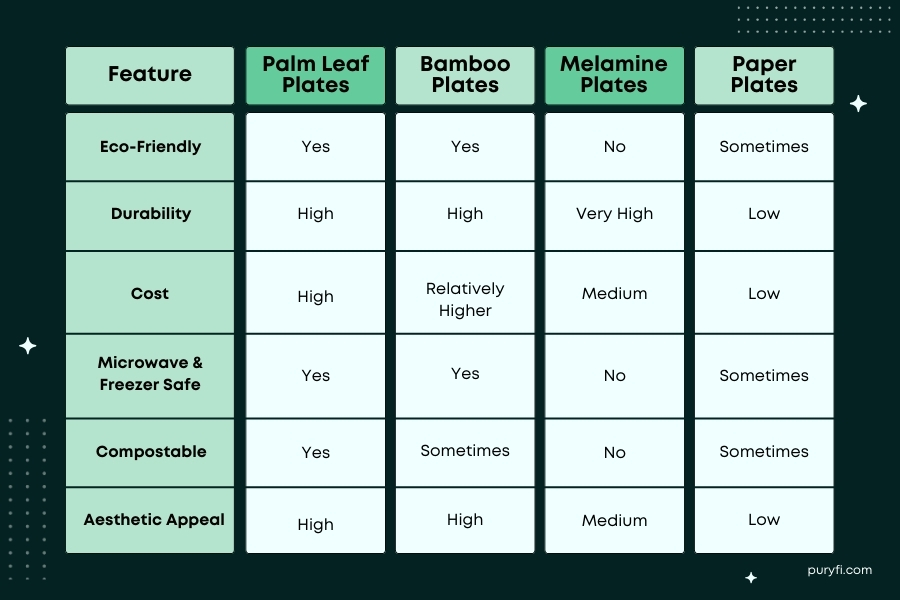
Which One Should You Choose?
The best option depends on your needs. Here are some key takeaways to help you decide:
- For Sustainability: Go with palm leaf plates or bamboo plates, especially compostable options.
- For Cost-Effectiveness: Paper plates are the cheapest disposable choice, but check for biodegradable options.
- For Durability: Melamine plates are the best for long-term use but are not eco-friendly.
- For Special Occasions: Palm leaf or bamboo plates add a touch of elegance while still being eco-friendly.
Frequently Asked Questions
- Bamboo vs palm leaf plates – which is better?
Both are eco-friendly choices, but palm leaf plates are sturdier, microwave-safe, and fully compostable. Bamboo plates are reusable but may require special care. The best option depends on whether you need disposable or long-term use.
2. Are bamboo plates non-toxic? Are bamboo plates safe?
Bamboo plates are non-toxic and safe for food if made from 100% natural bamboo without added chemicals or resins. Yes, bamboo plates are generally safe when made from natural bamboo without harmful additives.
3. Are paper plates safe?
Most paper plates are safe for dry foods, but some may have plastic or chemical coatings that are not heat resistant. Opt for uncoated, compostable paper plates for the safest option.
4. Are bamboo plates toxic?
Bamboo plates with melamine or synthetic binders may contain harmful substances. Always choose BPA-free, food-grade bamboo tableware to avoid toxicity concerns.
5. Are melamine plates safe?
Melamine plates are durable and lightweight, but they should not be used in the microwave or exposed to high temperatures, as melamine can leach into food when heated.
Final Words
Each type of plate has its pros and cons, but palm leaf plates stand out as the best choice. They are eco-friendly, biodegradable, and sturdy enough for various uses. While paper plates are cheap and convenient, they generate waste, and melamine plates, though durable, are not biodegradable. Bamboo plates are also sustainable, but palm leaf plates offer the best balance of strength, aesthetics, and environmental benefits. Weighing these factors, palm leaf plates emerge as the top option for those who prioritize sustainability without compromising on quality.

